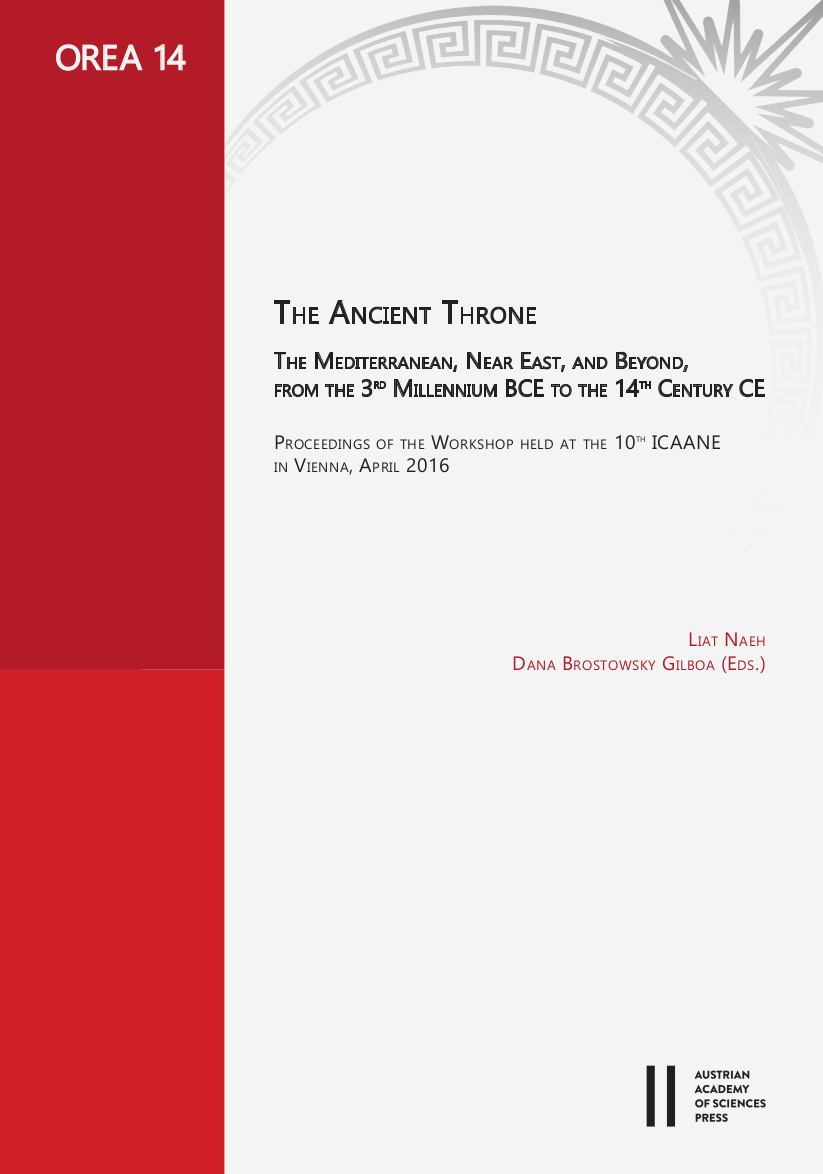
The Ancient Throne. The Mediterranean, Near East, and Beyond, from the 3rd Millennium BCE to the 14th Century CE.Proceedings of the Workshop held at 10th ICAANE in Vienna, April 2016, pp. 123-134, 2020/09/02
Proceedings of the Workshop held at the 10th ICAANE in Vienna, April 2016
Whereas the crown was a central icon of kingship in ancient Mesopotamia, West Semitic conceptions ofkingship differed deeply from their Mesopotamian counterparts. In Iron Age Levantine cultures (including Aramean,Phoenician, and Israelite), the throne was a far more potent symbol of the monarchy than was the crown, as is reflectedin the iconography, and especially in texts. Phoenician and Aramaic royal inscriptions, as well as biblical texts, showthat the preeminent regalia of royalty in the region were not crowns, but thrones and “shoots,” or scepters. This paperdraws on epigraphic, visual, and literary materials from the Levant, as well as comparative evidence not only fromMesopotamia, but also from Egypt and the Hittite world to emphasize the significance of the image of the throne inconstructing the image of the monarch in the Levant.
Keywords: royal inscriptions; Levant; kingship; thrones; Hebrew Bible